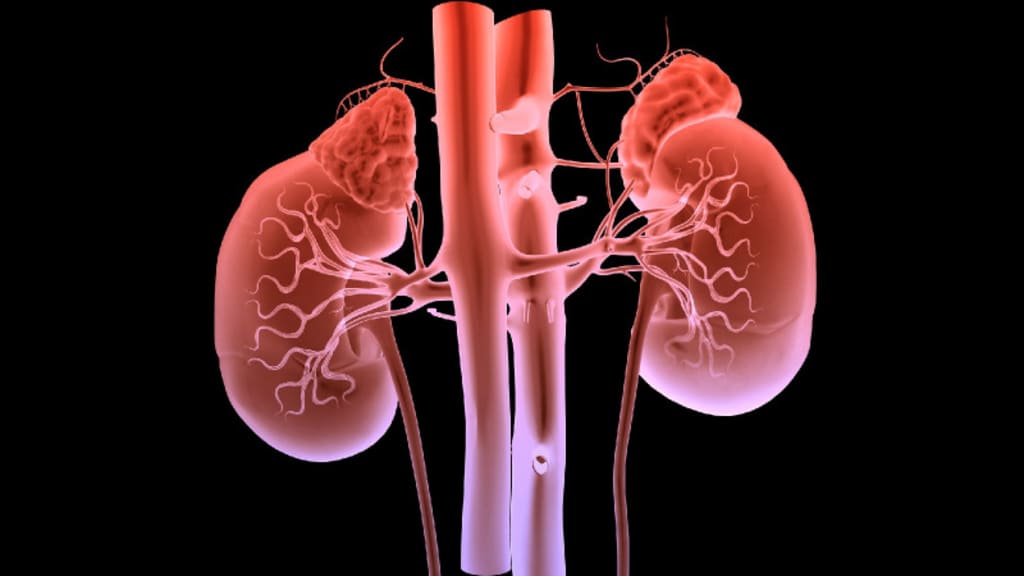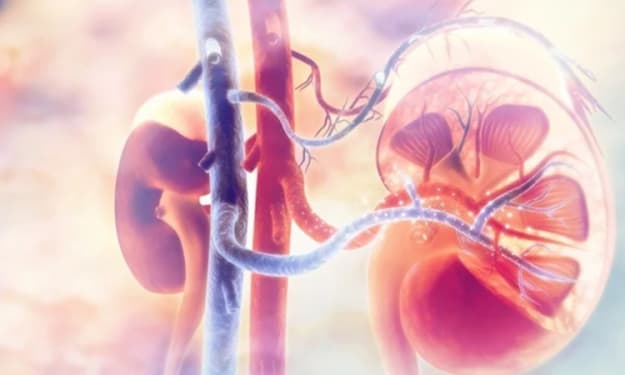Content warning
This story may contain sensitive material or discuss topics that some readers may find distressing. Reader discretion is advised. The views and opinions expressed in this story are those of the author and do not necessarily reflect the official policy or position of Vocal.
URETEROCELE
CAUSES, SYMPTOMS, AND TREATMENT OPTIONS

A kidney is undoubtedly one of the essential organs of the human body. The organ’s primary role is to process the liquid in the body and direct the waste and non-essential fluids out of the body. Hence, the proper function of these bean-shaped organs is necessary for the proper functioning of the overall body.
Health issues such as high blood pressure, diabetes, obesity, or a family history of kidney disease may disrupt the functioning of the organ, giving rise to various kidney disorders and other health problems.
Ureterocele is a congenital condition where the end of one or both ureters, the tubes that carry urine from the kidneys to the bladder, bulges and forms a pouch-like structure inside the bladder. This anomaly can obstruct urine flow and cause various urinary problems, often requiring surgical intervention for correction.
It is a congenital disability with no specific causes, making it a rare disorder observed in 1 individual among 1,000 people. This rare disorder may worsen if not treated with proper medication and treatment at the right time. Hence, identification of the symptoms at the right time with proper medical treatment is the first step to lowering the issues caused by the urinary issue.
Ureterocele imageUreterocele image
Causes of Ureterocele
The exact cause of ureterocele is not well understood, but it is believed to be a congenital condition that occurs during fetal development. Genetic factors and abnormalities in the formation of the urinary tract system may contribute to the development of ureteroceles. Additionally, certain underlying conditions, such as vesicoureteral reflux (a condition where urine flows backwards from the bladder into the ureters), may increase the risk of ureterocele.
Symptoms of Ureterocele
Ureterocele symptoms aren’t visible until they damage the urinary tract and cause the affected individual UTI. Hence, the symptoms of the medical disorder are similar to UTI.
Pain while Urinating– The urinary issue causes swelling at the end of the ureter, which leads to blockage in the passage of the urinary tract. Hence, the affected individual experiences extreme pain while passing urine. The pain may begin like a normal cramp in the initial stages, but if the treatment is procrastinated and not begun at the right time, it may enhance into extreme pain during urination.
Lump in the Abdominal Area– Another identifiable symptom of the medical disorder is the formation of a lump in the abdominal area. The lump may be caused at the end of the ureter tube entering the bladder. The lump may be caused due to swelling of the tube blocking the passage of urine from the body. The lump may also lead to other health problems, such as fever, weakness, urinary incontinence, etc.
Urinary Incontinence– This medical situation makes the affected patient urinate often. The urge becomes uncontrollable, making it difficult for the affected to hold urine longer. The incontinence happens due to ectopic ureteroceles. The issue may also cause partial blockage in the flow of urine.
Fever– Fever is another symptom of this urinary issue. The affected individual experiences high temperatures, which may also make one feel weak and tired. It may make one feel low for a few days. In case of such symptoms, the patient feels feverish along with weakness and inability to easily do tedious activities.
Blood in Urine (Hematuria): Hematuria, or the presence of blood in the urine, may occur due to irritation or infection.
Enlarged Kidney (Hydronephrosis): In severe cases, ureterocele can accumulate urine in the affected kidney, causing it to enlarge.
Treatment Options for Ureterocele
Surgery- Surgery is the last resort when other ureterocele treatment options fail to cure the disorder. The surgery helps to cure the issue by puncturing the swollen part and lowering the damaging symptoms. The surgery helps to resolve the issue and avoid its reoccurrence. It can be done once identified immediately and in case of severe stages of the disease.
The surgery on a child can be done immediately after the birth or when the affected child is in the infant stage. An ultrasound then follows the surgical procedure to ensure the swollen portion is punctured correctly and no other issues are emerging due to the procedure.
Endoscopic Incision: In some cases, an endoscopic incision or puncture may be performed. During this minimally invasive procedure, a surgeon makes a small incision or puncture in the ureterocele to allow urine to flow more freely. This can help relieve symptoms and reduce the risk of UTIs.
Ureteral Reimplantation: For more complex or severe ureteroceles, surgical reimplantation of the ureter may be necessary. This procedure involves repositioning the ureter and creating a new connection to the bladder to bypass the ureterocele.
Partial Nephrectomy: A partial nephrectomy may be performed in cases where the ureterocele has caused significant kidney damage or if there are associated kidney stones. This involves removing a portion of the affected kidney while preserving its function.
Antibiotics– Doctors also prescribe antibiotics to lower the symptoms of the disease. It helps to protect the urinary tubes and kidneys from infection and other damaging organisms. The antibiotics are helpful for the affected patient when the issue is identified in the prenatal period. The antibiotics are also helpful in avoiding various other urinary issues such as urinary tract infection, blockage in the tract of urine passage, and lower pain during urination.
About the Creator
Enjoyed the story? Support the Creator.
Subscribe for free to receive all their stories in your feed. You could also pledge your support or give them a one-off tip, letting them know you appreciate their work.





Comments
There are no comments for this story
Be the first to respond and start the conversation.